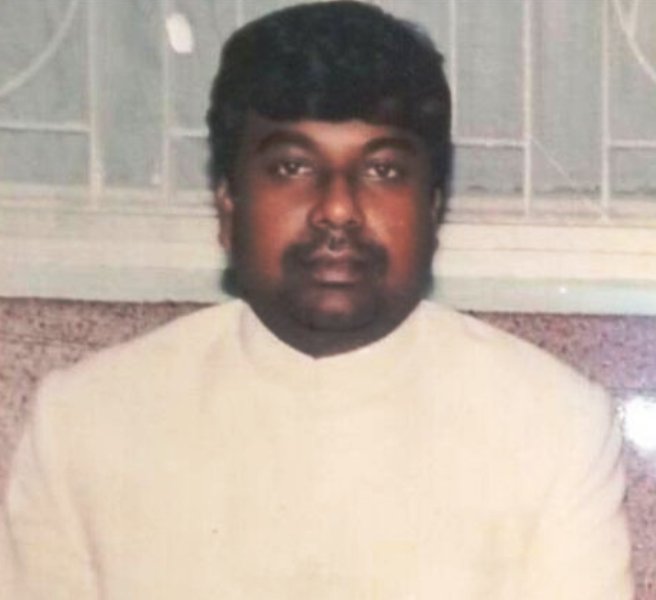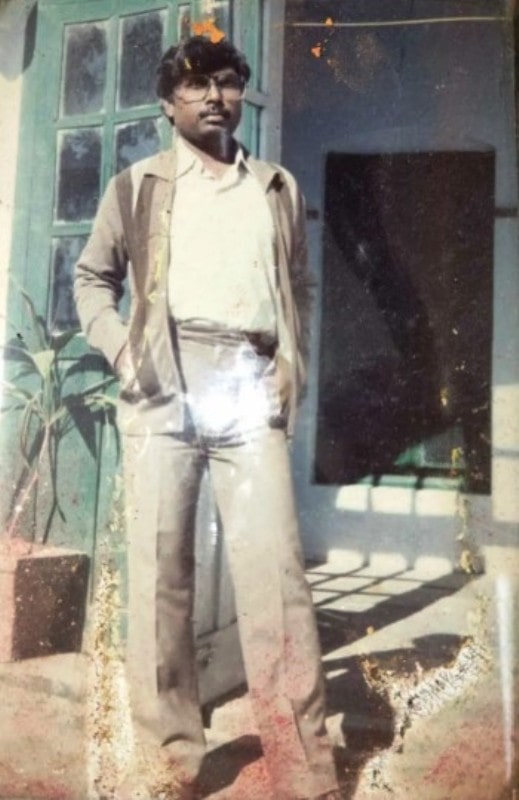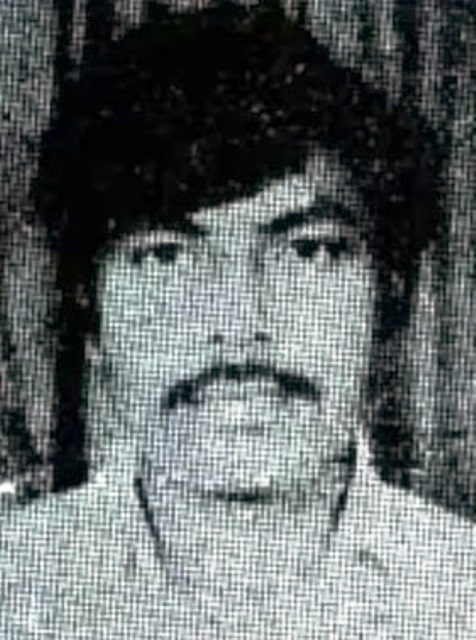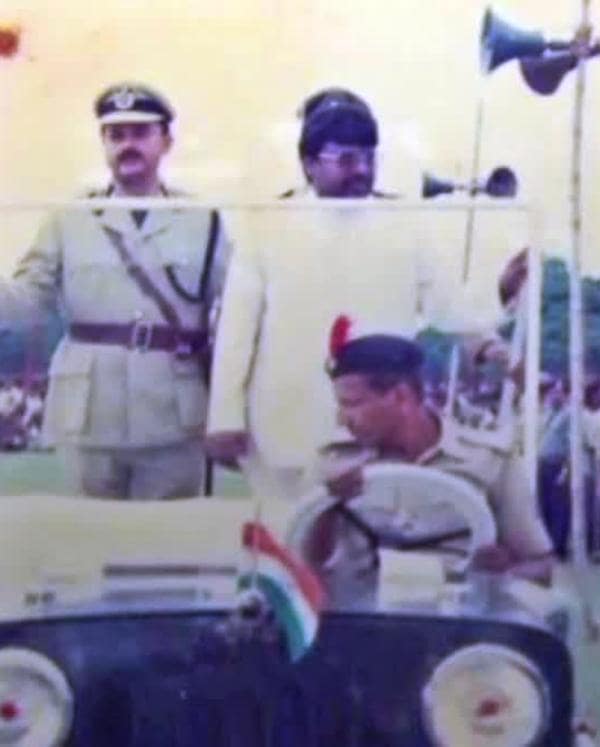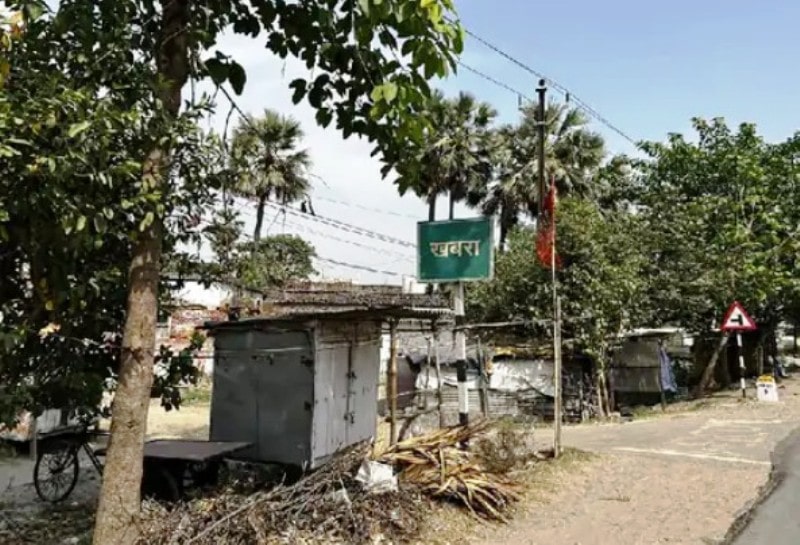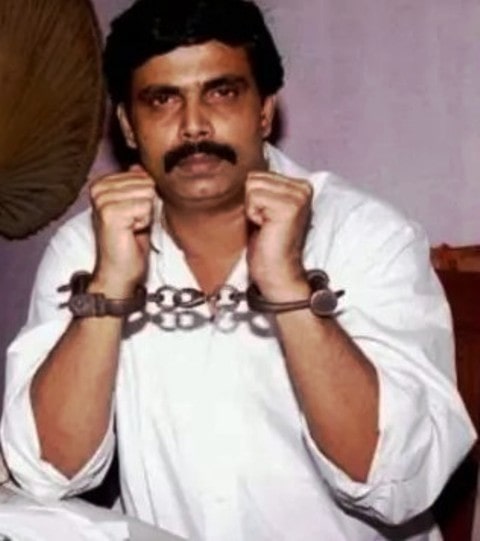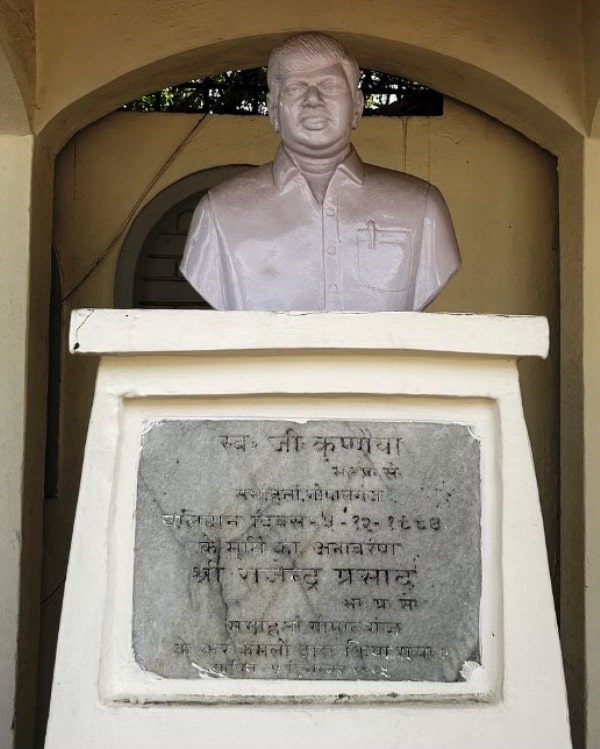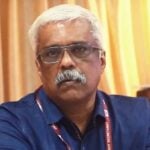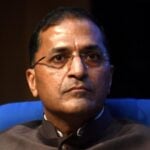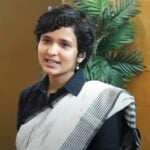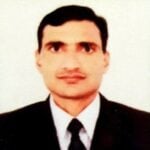G. Krishnaiah Age, Caste, Death, Wife, Children, Family, Biography & More
| Bio/Wiki | |
|---|---|
| Profession | Civil Servant |
| Physical Stats & More | |
| Height (approx.) | in centimeters- 168 cm in meters- 1.68 m in feet & inches- 5’ 6” |
| Eye Colour | Black |
| Hair Colour | Dark Brown |
| Career | |
| Service | Indian Administrative Service (IAS) |
| Batch | 1985 |
| Cadre | Bihar |
| Personal Life | |
| Date of Birth | 8 February 1957 (Friday) |
| Birthplace | Byrapuram village, Anantapur district, Andhra Pradesh, India |
| Date of Death | 5 December 1994 |
| Place of Death | Muzaffarpur, Bihar, India |
| Age (at the time of death) | 37 Years |
| Death Cause | Murder [1]DNA |
| Zodiac sign | Aquarius |
| Nationality | Indian |
| Hometown | Anantapur, Andhra Pradesh, India |
| College/University | • Maharani Adi Lakshmi Devamma (M.A.L.D) Government Arts and Science Degree College, Gadwal, Telangana • Osmania University, Hyderabad |
| Educational Qualification(s) | • BSc (Botany) • MA (English Literature) [2]SUPREMO [3]The New Indian Express Note: He secured the first division in BSc and the second division in MA. |
| Caste | Dalit (Scheduled Castes) [4]The South First |
| Relationships & More | |
| Marital Status (at the time of death) | Married |
| Affairs/Girlfriends | Uma Krishnaiah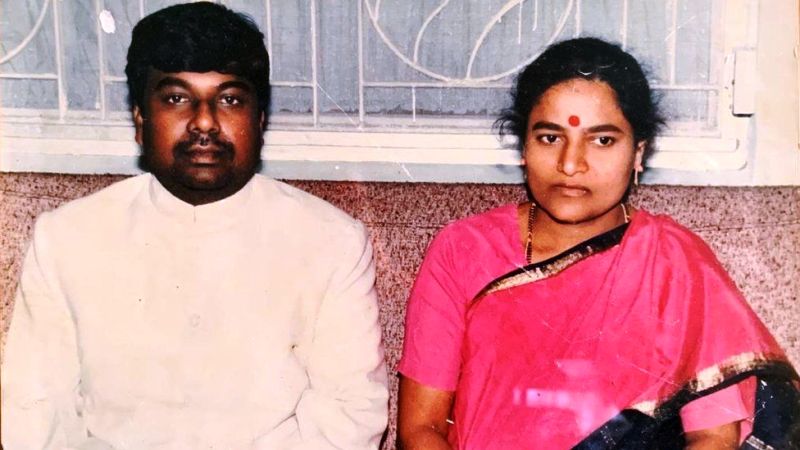 Note: They both met each other while pursuing graduation at Maharani Adi Lakshmi Devamma (M.A.L.D) Government Arts and Science Degree College. |
| Marriage Date | Year, 1986 |
| Family | |
| Wife/Spouse | Uma Krishnaiah (teacher)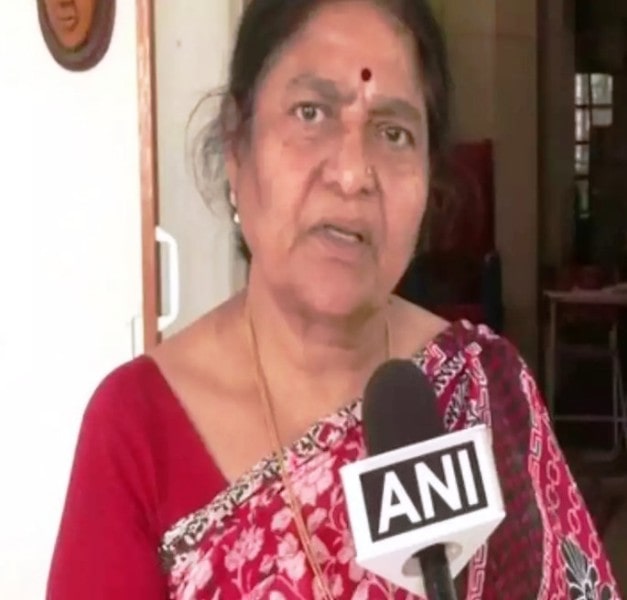 |
| Children | Daughter(s)- 2 Niharika Krishnaiah (elder; banker) Padma Krishnaiah (younger; software engineer) 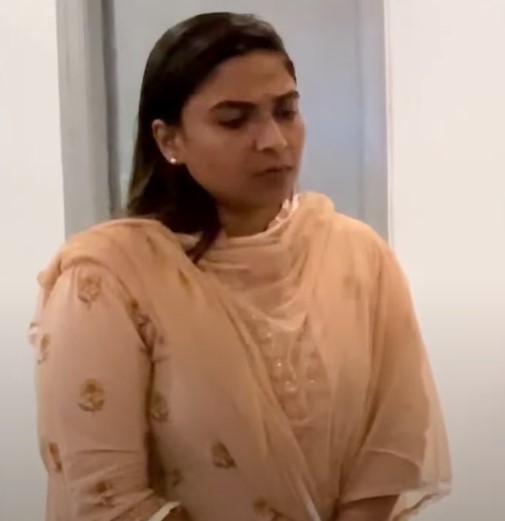 |
| Parents | Father- G Seshanna (deceased; porter) Mother- Venkamma (deceased; homemaker) |
| Siblings | Brother- Ayyanna Krishnaiah (elder) |
Some Lesser Known Facts About G. Krishnaiah
- G. Krishnaiah was an Indian civil servant who was killed in December 1994 after a mob lynched him. He made the headlines in April 2023 after Anand Mohan Singh, who was convicted for Krishnaiah’s murder in 2007, was set free by the Government of Bihar after it tweaked the Bihar Police Jail Manual 2012.
- Krishnaiah began working as a porter with his father at an early age to help his family make ends meet. He continued his schooling side-by-side by working as a labourer in the morning and attending school in the evening.
- Due to a lack of money, Krishnaiah’s family sent him to stay at a community hostel in Andhra Pradesh during his childhood.
- In an interview, he revealed that he paid for his education by himself and did not ask for money from his family.
- Krishnaiah landed the job of a clerk in a government office upon completing his formal education.
- Later, he left his government job and worked with several local Andhra newspapers as a journalist.
- Thereafter, he was employed in an education institute in Andhra Pradesh as an English teacher following which he began his preparations for the civil services examination conducted by the Union Public Service Commission (UPSC). He made it through on his first attempt.
- From 1985 to 1986, he underwent extensive administrative training at the Lal Bahadur Shastri National Academy of Administration (LBSNAA) in Mussoorie, Uttarakhand.
- After completing his training in 1986, Krishnaiah was sent to West Champaran in Bihar on his first assignment. There, he assisted the Bihar government in formulating and implementing numerous land reform acts, which led to the upliftment of the poor landless peasants. However, Krishnaiah received a lot of flak from the land mafias who worked against him, making it difficult for him to do his job. Despite the setbacks, Krishnaiah managed to implement policies as a result of which he became popular amongst the locals there.
- From West Champaran, Krishnaiah was later sent to the Nalanda district, where he served as an assistant collector.
- Thereafter, he became a Sub Divisional Magistrate (SDM) at Hazaribagh.
- Later, he was promoted and sent to Bettiah as a District Magistrate (DM).
- On 1 September 1987, he was posted as an assistant collector in the Department of Land Revenue Management & District Administration, where he later became an Additional District Magistrate (ADM). He served in the department till 1 August 1989.
- On 1 August 1989, he was sent to the Home Ministry of the Bihar government as a joint secretary and served in the ministry till 1 December 1989.
- From 1 December 1989 to 1 April 1992, Krishanaiah served in the Department of Land Revenue Management & District Administration as the Deputy Development Commissioner (DDC).
- On 1 April 1992, Krishnaiah was sent to the Saharsa district, where he was appointed as the District Magistrate (DM) in the Department of Land Revenue Management & District Administration. He remained in the post till 1 December 1994.
- In December 1994, he became the District Magistrate (DM) of the Gopalganj district.
- Krishnaiah was on his way to Gopalganj from Hajipur on 5 December 1994 when his vehicle was stopped near the Muzaffarpur highway by the angry protestors, attending the funeral of a gangster-turned-politician Chottan Shukla. After stopping his vehicle, the protestors began throwing stones at his car and dragged his bodyguard out as a result of which Krishnaiah had to step out of his vehicle to persuade the mob to let him and his bodyguard leave; however, his request was not listened to by the mob which began assaulting him. After severely wounding Krishnaiah, Bhutkun Shukla, the younger brother of Chottan, shot Krishnaiah three times in his head, killing him. [5]DNA In an interview, Deepak, his driver, narrated the incident and said,
We were coming back from Hajipur in 1994 after a meeting when a violent juloos (mob) attacked us. The mob first pulled out Krishnaiah sir’s bodyguard from the ambassador. I didn’t stop the car and tried to speed past the crowd. But sir asked me to stop the car because he wanted to save the bodyguard who was left behind. As soon as I stopped the car, the mob attacked us. They beat me up so badly that I developed a hearing disability. That was the last time I saw G Krishnaiah sir. I managed to run for my life. After some time, when I came back, I saw sir lying lifeless in the pit. We took him to the hospital later on.”
- Following the IAS officer’s murder, the police began a probe into it on the instructions of the Bihar government and registered a case against a politician named Anand Mohan Singh and his wife Lovely Anand. The Bihar Police’s Intelligence Wing recorded a video of the procession in which Anand and Lovely were seen instigating the crowd against the then DM and SP of Muzaffarpur. On 3 October 2007, the Patna District Court gave the death penalty to Anand Mohan after Bihar Police proved his involvement in the murder of G. Krishnaiah.
The death penalty was overturned by the Patna High Court in 2008 after litigation was filed by Anand. Anand filed a plea in the Supreme Court in 2012 against the decision of the PHC; however, the plea was quashed by the apex court, upholding the decision of the life sentence of PHC. Anand was set free from jail on 27 April 2023 after the Bihar government, led by Nitish Kumar, brought some changes to the clauses listed in the Bihar Police Jail Manual 2012. On 24 April 2023, the state government’s law department issued a notice, notifying the authorities that as per the new amendments, Anand and 26 other prisoners shall be released from jail. The official notification of the department read,
In the light of the Bihar state sentence remission council meeting on April 20, 2023, the decision was taken for the release of prisoners having served actual sentence of 14 years or sentence of 20 years with remission.”
As soon as the government issued the notice, it came under flank from many politicians, who criticised the move. Mayawati, the BSP leader, while giving an interview, said,
In my entire career, I have never gone through such a change in the jail manual; this is unprecedented, not only in Bihar but in India as well. I am going to challenge the amendment in Patna High Court through PIL, my lawyer is already drafting the petition. I was trying to convince Ms. Uma Krishnaiah, the widow of G. Krishnaiah to file a PIL against the amendment but she was threatened by Anand Mohan’s gang and she refused to come to Bihar. Anand Mohan should be back at Saharsa jail. Any amendment should be in public interest rather than for any individual. He is not Nelson Mandela. Anand Mohan has committed a cold blooded murder of a serving IAS officer. To save a murderer, Nitish Kumar is amending the rule which is mala fide. It will not stand in the court.”
Later, Uma, the wife of the slain IAS officer, expressed her displeasure over the actions of the Bihar government and asked Prime Minister Narendra Modi to look into the issue. The IAS Association also wrote a letter to Chief Minister Nitish Kumar asking him to change the decision. The association also said that it was exploring legal ways through which the order can be put on hold. Uma, while giving an interview, said,
Nitish Kumar is setting a horrible precedent by releasing a person convicted of murder. It will embolden criminals to attack government officials because they know they can easily get out of prison. For just a few Rajput votes, he has taken a decision that has so many consequences for the common people. The Rajput community should think over this – whether they want a criminal like Anand Mohan to represent them in politics.”
- The Government of Bihar established G. Krishnaiah’s statue in his honour at the Gopalganj collectorate following his lynching.
- IPS officer Abhayanand, G. Krishnaiah’s close friend, in an interview, revealed that Krishnaiah avoided having supper with influential people at their home as he believed that it would bind him to listen to them.
- He knew many languages including Telugu, Hindi, English, and Kannada.
- As per his relative, he was a voracious reader and had a room in his home filled with books.
- He followed the teachings imparted by Swami Vivekananda and drew inspiration from them.
References/Sources:

